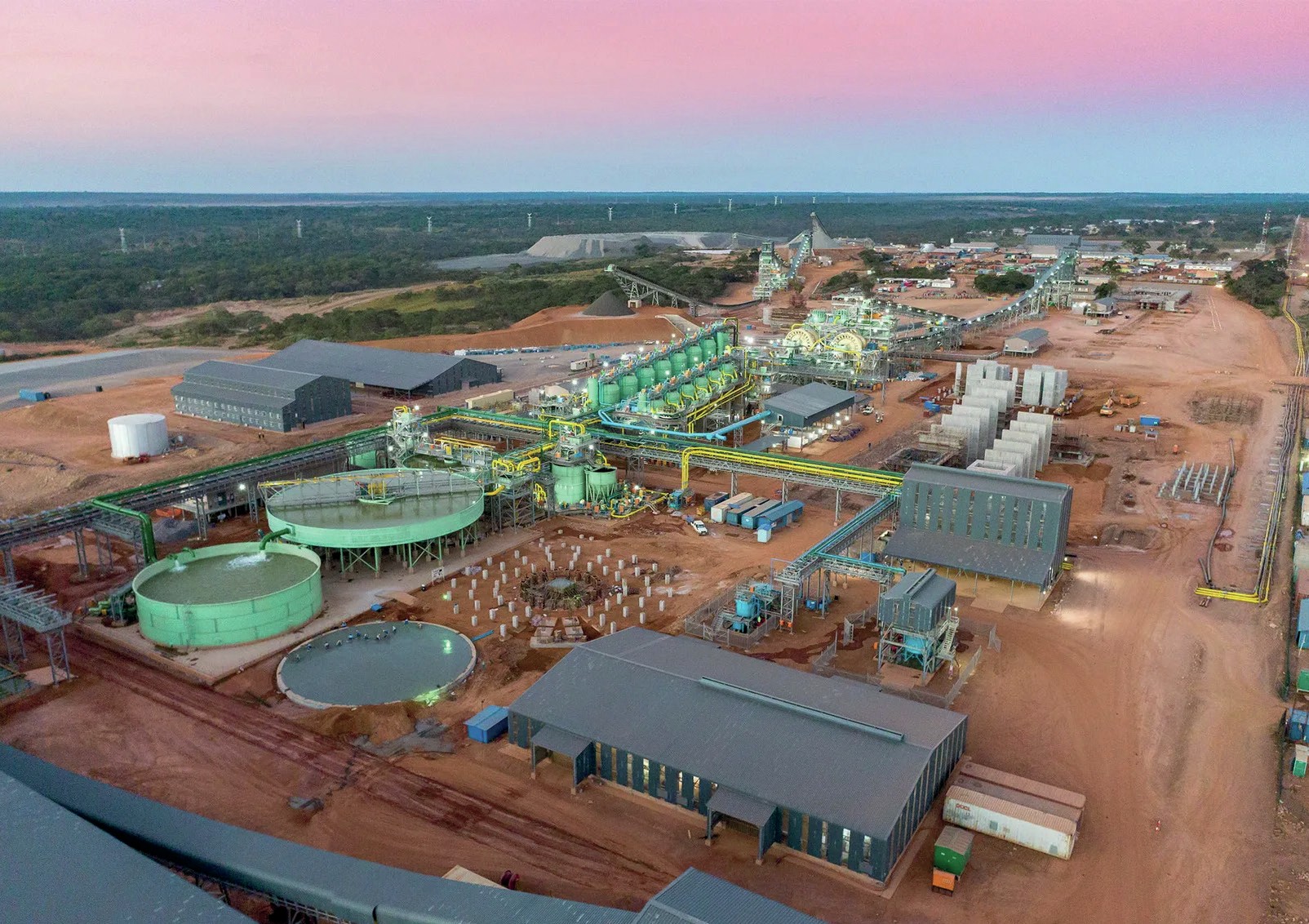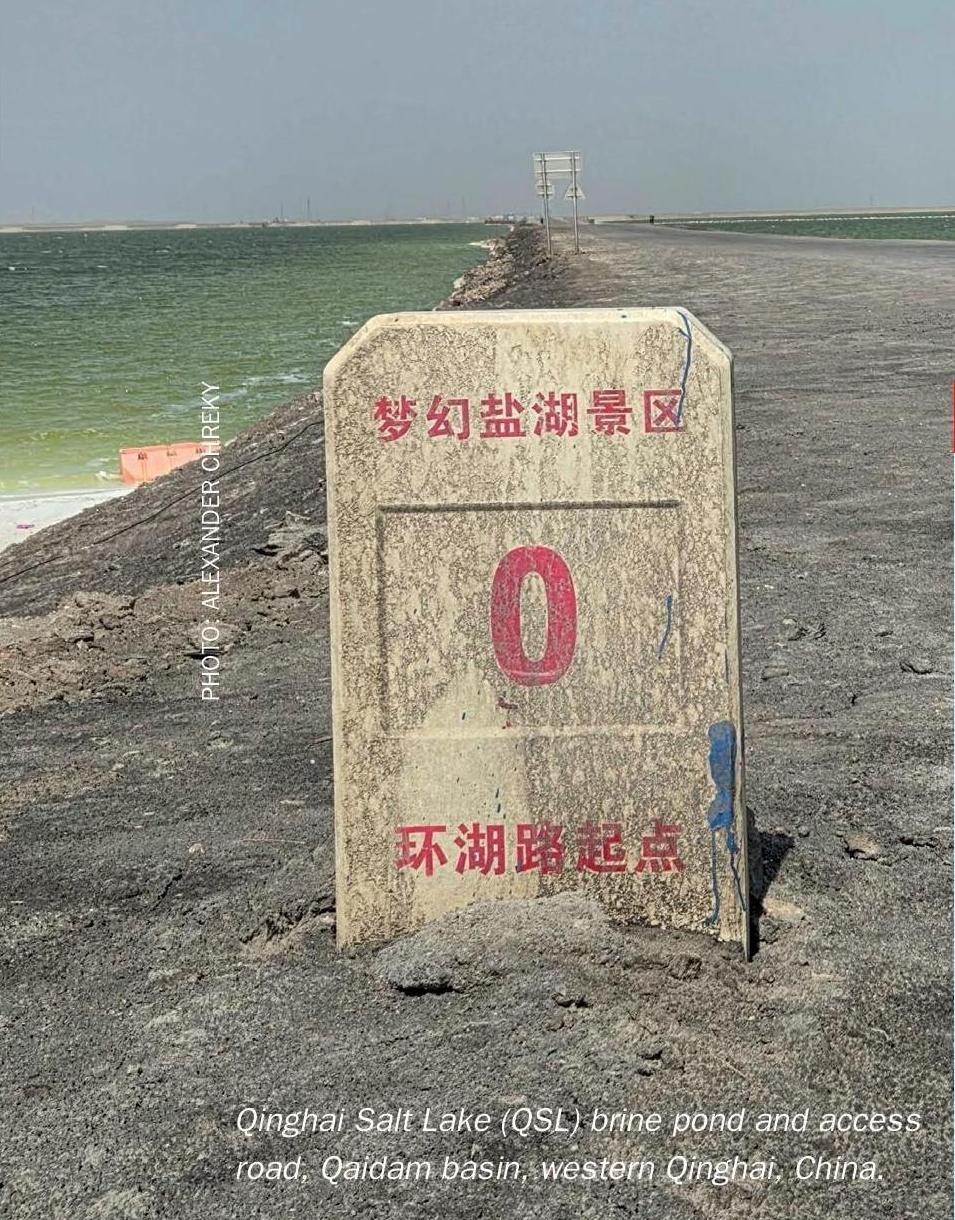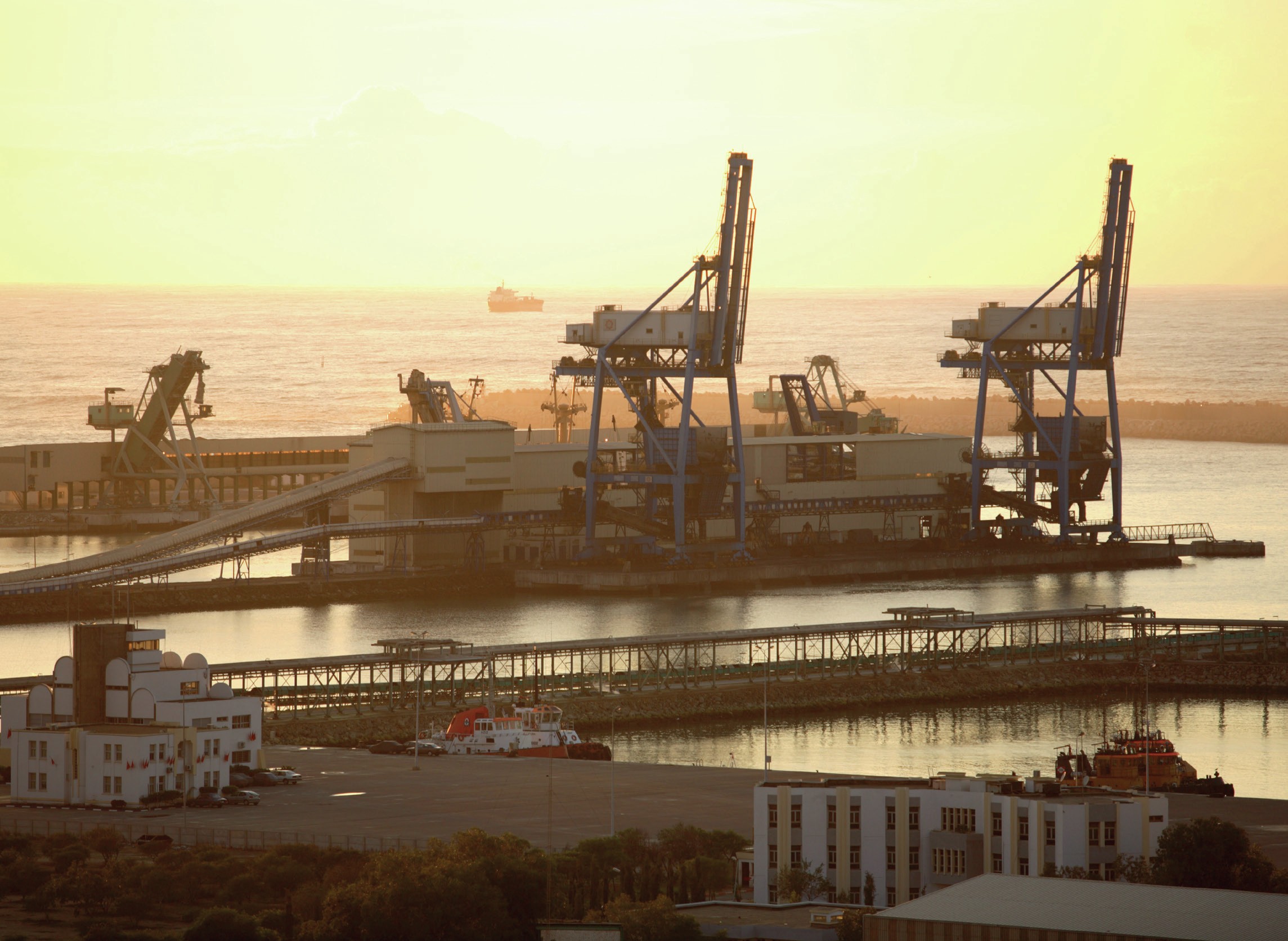Nitrogen+Syngas 364 Mar-Apr 2020

31 March 2020
Africa’s fertilizer renaissance
AFRICA
Africa’s fertilizer renaissance
New ammonia and urea plants in Nigeria and Ethiopia are part of a wave of new capacity in Sub-Saharan Africa, and may help pull up regional demand from its current low base level.

While Africa has for a variety of reasons often been behind the curve in terms of the developments in both industry and agriculture that have been seen in, for example South America or South or Southeast Asia, there are hopeful signs that that may be changing. Some of this is coming on the back of a wave of new resource development in the region that peace and more stable economic conditions have allowed. Gas exploration and production is expanding rapidly, and Africa is now the last major region where there is large scale ‘stranded’ gas suitable for export-oriented nitrogen capacity, although political risk and poor infrastructure remain barriers to development.
Gas
Key to the success of any ammonia and downstream urea or other project is securing a supply of feedstock, and that usually means natural gas. African natural gas production is currently concentrated in the north of the continent, especially Egypt and Algeria, where most of the Africa’s ammonia/urea capacity is based, while Sub-Saharan Africa represents only one third of the continent’s gas output. Sub-Saharan Africa’s natural gas production was estimated at 75.9 bcm in 2018, as against 236.6 bcm for the whole of Africa. Within that figure, the output for the region is dominated by Nigerian gas production, which reached 49.2 bcm that year, representing 65% of Sub-Saharan production. Other significant regional producers are Angola and Mozambique, with smaller volumes coming from the Republic of Congo, Tanzania, Côte d’Ivoire and Equatorial Guinea – Table 1 shows production and consumption figures for Africa’s leading producers and consumers.
However, while Sub-Saharan African gas production outside of Nigeria remains currently fairly small, the region has seen a number of new gas discoveries in recent years, and has become a major focus for international oil and gas companies in the past decade, who have seen themselves shut out of some major markets such as Saudi Arabia by national oil companies. So while Sub-Saharan Africa has only 2% of the world’s gas production, it is the focus of up to 30% of the exploration and development efforts by major producers.
Prior to this, the focus had been on oil development, and associated gas was seen mainly as an inconvenience and often flared. However, the development of an international market for gas via liquefied natural gas (LNG) trade saw LNG plants beginning to be developed in the region, first in Nigeria in 1999, followed more recently by Equatorial Guinea (2007), Angola (2013) and Cameroon (2018). Interest gathered pace in East Africa from 2009, following major gas discoveries in Mozambique and Tanzania, and LNG projects are slated for these countries too.
Adding to the buzz of activity in Africa’s gas sector is growing domestic use of gas as countries begin to industrialise. Sub-Saharan African economies are transitioning to gas, and requiring more gas to feed gas-fired power generation, in addition to rapid progress in renewable energy. And this trend will be boosted by rapidly growing populations. Africa’s population is among the fastest growing and youngest in the world. One in two people added to the world’s population between today and 2040 will be African, and the continent is on course to become the world’s most populous region by 2023, overtaking China and India.
LNG
Gas development in Sub-Saharan Africa has been spearheaded by LNG export projects. Nigeria is the biggest and longest established player here, exporting 27.8 bcm of gas in 2018 (20.5 million t/a of LNG). Angola followed at 5.2 bcm (3.8 million tonnes). Since 2007 Equatorial Guinea has operated a 3.7 million t/a LNG plant at Bioko Island, and has recently found new gas fields to extend the operating life of the plant. Most recently, in Cameroon, Golar LNG started operations via a 1.2 million t/a capacity floating LNG (FLNG) platform in 2018, although so far only two of the four trains in the vessel are operational, with the third likely to become so this year.
Development is accelerating, however: joining these established projects are several new ones. In late December 2019 Nigeria made a final investment decision to go ahead with a major expansion of its Bonny LNG plant via a new 7th train which will increase capacity by 4.2 million t/a, as well as debottlenecking of existing capacity to add a further 3.4 million t/a. Overall, Nigeria’s LNG capacity will increase by 35% to just over 30 million t/a by 2024. Train 7 will cost $6.5 billion to build, with another $5 billion to be spent on wells and pipelines needed to supply the plant, according to Nigeria LNG (NLNG).
Mozambique has a huge series of investments in the pipeline, beginning with the Mozambique LNG Project, which is being developed by a consortium including Total, Mitsui & Co, ONGC, ENH, Bharat PetroResources, PTTEP and Oil India Ltd – Total bought out Andarko’s 26.5% share in the project in September 2019 for $3.9 billion – a sign of how seriously the project is being taken. Initial plans call for two 6.4 million t/a liquefaction trains with associated jetty and infrastructure at a cost of $20 billion. A final investment decision was taken in June 2019 and construction began in August, with production scheduled to begin in 2024.
Close behind it is ExxonMobil’s Rovuma LNG project, jointly being developed with Eni, which is to consist of two 7.6 million t/a liquefaction trains on the Afungi Peninsula at a cost of $22 billion. Construction of onshore facilities has been awarded to a consortium led by Japan’s JGC, TechnipFMC and Fluor. Production is expected to begin in 2024/25. Exxon said it would make a final investment decision in early 2020, although it remains unclear what effect the current collapse in oil prices may have on that. As part of the Coral gas field development which will feed Rovuma, Eni is also developing an $8 billion “ultra-deep water” floating LNG project for the field, with a production vessel with a capacity of 3.4 million t/a of LNG. Construction of the vessel began in September 2018, and first gas is due in 2022.
As well as LNG, Shell is considering a 68,000 bbl/d gas to liquids plant at Afungi in Mozambique, and is due to make a final investment decision next year. In Tanzania, Shell has also been developing a $30 billion, 10 million t/a LNG project, but this has been held up for years due to regulatory delays, land acquisition and hydrocarbon legislation. The government is currently saying that construction will begin in 2022 and gas will be flowing by 2028, although the timetable remains very uncertain.

Meanwhile, on the maritime border of Mauritania and Senegal, the Tortue Ahmeyim project is a field development operated by BP. BP has recently awarded TechnipFMC a large contract, between $500 million and $1 billion, to build an FPSO unit to be deployed for phase 1 of the project in 2022. Front end engineering and design for Phases 2 and 3 have begun for the onshore facility, which is due to be in production during 2024.
However, a second floating LNG project for Cameroon is looking doubtful, and the other projects are all subject to potential cost inflation, and regulatory and other political risks.
Other feedstocks
Gas developments have led to a flurry of fertilizer plant feasibility studies, but previously much of the region’s fertilizer production have been based on coal and renewables. Sub-Saharan Africa’s nitrogen industry began in South Africa based on ammonia from coal gasification using Sasol technology. Today Sasol operates a 300,000 t/a plant at Sasolburg and two trains at Secunda with another 250,000 t/a, all based on coal gasification. From this AEL manufactures ammonium nitrate for explosives use using ammonia sourced from Sasol, as does mining company Omnia, which has nitric acid, AN and CAN facilities at Sasolburg. Omnia has expanded production at Sasolburg, adding a 330,000 t/a nitric acid and ammonium nitrate plant.
Zambia likewise developed coal-based capacity, including 100,000 t/a of ammonia production at Kafue, operated by Nitrogen Chemicals of Zambia (NCZ), as well as downstream nitric acid, ammonium nitrate and ammonium sulphate production. Most of this capacity has been closed down, but the AN plant was re-started in 2013 using ammonia imported from South Africa.
On the renewables side, Zimbabwe operated an electrolysis-based ammonia plant at Kwekwe using electricity from the Kariba Dam, but this closed in 2015 due to the high electricity costs involved. Sable Chemicals continues to run nitric acid and ammonium nitrate production at the site using ammonia imported from South

Africa, and briefly considered switching to a coal gasification feed. Now however the company is instead looking at a new solar farm, initially of 50 MW to become operational in 2021, but eventually expanding to 150 MW to run electrolysis for ammonia production.
Nigeria
Nigeria has had a long history of domestic nitrogen production, beginning in 1987 with the National Fertilizer Company of Nigeria (Nafcon) plant, which operated 500,000 t/a of gas-based ammonia-urea production at Onne, near Port Harcourt in the east of Nigeria. The company suffered from financial and operating problems throughout the 1990s however, and Nafcon was sold on in 2005 to Egypt’s OCI group, becoming Notore Chemical Industries. Notore refurbished the plant and reopened it in 2010. A subsequent debottlenecking project increased capacity to 430,000 t/a of ammonia and 750,000 t/a of urea in 2013.
Several projects to build new nitrogen capacity followed, but delays in gas allocations and difficult financing slowed development. The first new project to be commissioned was the Indorama Eleme Fertilizer and Chemicals Ltd facility at Port Harcourt, River State, developed by Indonesian chemical giant Indorama Corp. Toyo Engineering and Daweoo Nigeria built the plant using KBR ammonia technology for the 2,300 t/d ammonia plant and a Toyo license for the 4,000 t/d urea plant. The facility was commissioned in 2016, and since then Indorama has approved the construction of a second, identical ammonia-urea train. Construction is under way, with completion scheduled for 2021.
Outside of Indorama, the major development has been the $2 billion Dangote complex in the Lekki Free Trade Zone east of the capital, Lagos, next to a refinery and petrochemical plant run by the same company. The Dangote project has been a huge one, consisting of two 2,200 t/d Topsoe-designed ammonia plants feeding two 3,850 t/d Saipem urea plants, for a total of 2.5 million t/a of urea capacity. While completion of a gas supply pipeline pushed start-up back from 2019, the plant is now reported to be in commissioning and due to be on-stream this year.
The Dangote complex takes Nigeria’s urea capacity to 4.5 million t/a and Indorama will make that 5.8 million t/a. This is considerably ahead of domestic consumption, although that has been rising as more fertilizer becomes available. Nigeria consumed 550,000 t/a of urea in 2016, but after the Indorama plant started up this rose to 750,000 t/a in 2017. Nevertheless, both Indorama and Dangote rely upon export sales.
Other projects
There have been a number of other nitrogen schemes proposed for the region, but outside of Nigeria actual concrete developments have been scarcer. An Indian project for a 1.2 million t/a urea plant in Ghana was cancelled in 2014 after the government could not guarantee gas supplies, and another Indian project in Gabon was cancelled the same year. Plans have also been floated for ammonia-urea plants in Cameroon, Tanzania, Mozambique and Angola, but so far none have made it past the design stage. In Ethiopia, a 300,000 t/a coal-based urea plant that was to have formed part of a fertilizer complex being developed with Chinese assistance at Yayu remains only 45% complete after nine years. The project has been mired in corruption allegations and last year the government dismissed the nation’s military-linked Metals & Engineering Corp. from overseeing the project and handed it to Morocco’s OCP. OCP has bigger plans for Ethiopia, though, and in 2016 engaged Tecnimont for a feasibility study on a huge $3.7 billion fertilizer complex for Dire Dawa in the east of Ethiopia, to include two 1,500 t/d gas-based ammonia plants and a 3,200 t/d urea unit as well as NPK production. Work has reportedly begun at the site at Dire Dawa, and completion is expected some time in 2023 or 2024, according to OCP.
OCP has been increasing its presence in Africa and the company is working on a number of bulk blending plants across the region and phosphate capacity in Senegal. In Nigeria, it signed off late last year on developing a 750,000 t/a ammonia plant which it would use for downstream diammonium phosphate (DAP) production using phosphoric acid shipped from Morocco.
Fertilizer demand
While many of the ammonia-urea projects have been at coastal locations aimed at export markets, the hope has always been that a greater regional supply of fertilizers will also help boost demand there. Africa, especially Sub-Saharan Africa, is a relatively minor consumer of fertiliser, and five countries (Ethiopia, Kenya, Nigeria, South Africa and Zambia) account for almost two-thirds of consumption (see Figure 1). African leaders adopted the Abuja Declaration in 2006, calling for increasing average fertilizer use in sub-Saharan Africa (SSA) from less than 10 kilograms per hectare (kg/ha) to at least 50 kg/ha by 2015. However, this goal was missed by a considerable margin: by 2018, the application rate was still only 17 kg/ha in Africa, compared to a global average of 140 kg/ha.
The region has vast amounts of arable land and extensive agricultural production (albeit with low yields) but soil fertility is low – the major increase in food production that the region needs to feed its projected population increase over the next 20 years will need to come from increased fertilizer use. The main barrier to this is that 70% of farmers in the region are smallholders and fertilizer is often too expensive without government subsidy because prices are boosted by poor transportation infrastructure. Some of this is because ports are often not able to handle larger vessels, so capacity to handle fertilizer shipments is limited, and here developing local fertilizer capacity can help, but poor road and rail infrastructure are also major problems.
There are however encouraging signs that this is changing. Fertilizer consumption is rising in the region, at a faster rate than anywhere else in the world – albeit from a small base. IFA is predicting 4.5% year on year increase in African nitrogen demand over the next five years, as compared to an average global demand increase of just 1.3%. This will add 800,000 tonnes N of nitrogen demand in Africa between 2018 and 2023 – equivalent to 1.7 million t/a of urea. Of course, at the same time, urea capacity is projected to increase by nearly 5 million t/a, assuming no project slippages (although half of that is represented by Dangote – currently commissioning), and so for the time being African producers will need to find markets in India, South America and possibly even further afield for their urea.






